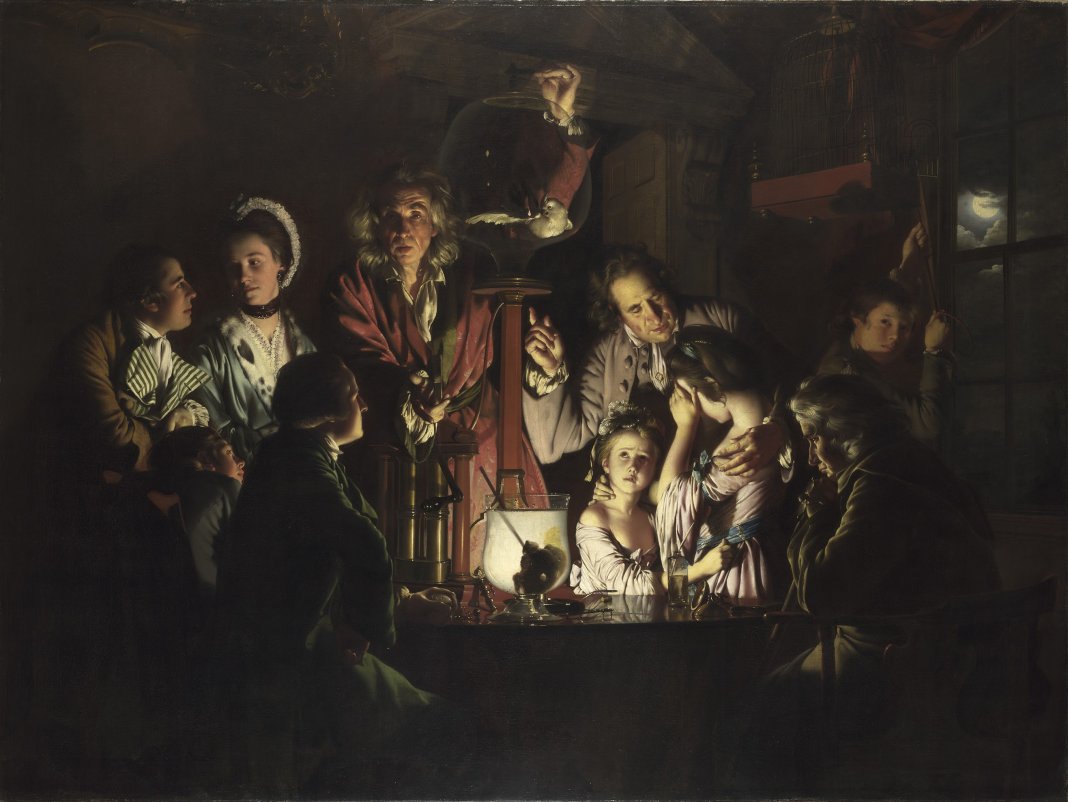The National Gallery has announced its first-ever exhibition dedicated to the mysterious and captivating ‘candlelight’ paintings of Joseph Wright of Derby, offering London art enthusiasts a rare opportunity to see these masterpieces of British art together for the first time in 35 years.
“Wright of Derby: From the Shadows,” running from November 2025 to May 2026, will challenge traditional interpretations of the 18th-century artist, moving beyond his reputation as merely an Enlightenment painter to explore his fascination with darkness, mortality, and the sublime. The exhibition will be housed in the Gallery’s intimate Sunley Room, providing the perfect setting for Wright’s dramatic use of light and shadow.
The centerpiece of the exhibition will be the Gallery’s own masterpiece “An Experiment on a Bird in the Air Pump” (1768), displayed alongside other remarkable works including “Three Persons Viewing the Gladiator by Candlelight” (1765) and “A Philosopher giving that Lecture on the Orrery” (1766). These paintings, with their theatrical depictions of scientific demonstrations and artistic contemplation, capture a pivotal moment in London’s intellectual history when public interest in science and art was flourishing.
Wright’s work holds particular significance for London’s art history, as he was working during the founding of the Royal Academy and the establishment of public art exhibitions in the capital. His paintings, which draw inspiration from Caravaggio’s dramatic lighting techniques, represented a bold departure from the conventional British artistic style of the mid-18th century.
The exhibition will include over twenty works, complemented by prints and historic objects that illuminate both Wright’s artistic practice and the scientific and cultural context of Georgian London. For those interested in the technical aspects of historical painting, the exhibition will explore Wright’s innovative use of mezzotint prints, which he employed to build his reputation both in London and internationally.
This is a rare chance for Londoners to see these atmospheric masterpieces together in one space, offering insights into a fascinating period when the capital was emerging as a center of scientific and artistic innovation. The exhibition will later travel to Derby Museum and Art Gallery in 2026, but the National Gallery setting provides a unique opportunity to see Wright’s work in the context of the great European masters who influenced him.
For London history enthusiasts, the exhibition offers a window into a crucial period when the capital’s artistic and scientific communities were becoming increasingly intertwined, and public spaces for learning and culture were being established. Wright’s paintings capture this moment of transformation, when candlelit demonstrations of scientific principles were drawing crowds of curious spectators from all levels of society.
The exhibition will be a must-visit for anyone interested in British art history, the Georgian era, or the development of London’s cultural institutions. It promises to cast new light on an artist who, while known as “of Derby,” played a significant role in shaping the cultural landscape of 18th-century London.
A Little Bit of London In Your Inbox Weekly. Sign-up for our free weekly London newsletter. Sent every Friday with the latest news from London!



